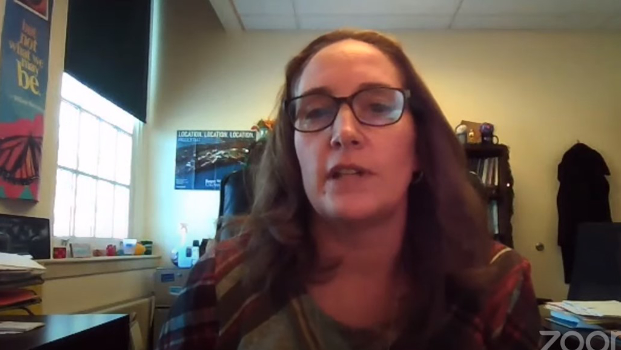“Schools face great challenges in the coming years as the impact of the pandemic on children’s academic and social emotional wellbeing becomes clear,” CEA Teacher Development Specialist Kate Field told legislators yesterday. “Children were already facing a mental health crisis prior to the pandemic, a crisis that can only have been exacerbated by COVID.”
It was already clear to teachers before the pandemic that students need additional social emotional supports, and COVID-19 has only exacerbated those needs. That’s why CEA and educators spoke out in support of many provisions of House Bill 6557 An Act Concerning Social Emotional Learning during a hearing of the legislature’s Education Committee.
“CEA is in support of sections 1-4 of HB 6557, which would provide $10 million to increase mental health and emotional wellbeing support and resources in Connecticut’s schools,” said CEA Vice President Tom Nicholas. “There is a disconnect between what students need, recognition of those needs, and our ability and willingness to pay for those needs. Many schools do not have ready access to student support personnel like social workers, counselors, or school psychologists.”

CEA Vice President Tom Nicholas asked legislators to increase mental health and emotional wellbeing supports for students.
Nicholas said that Connecticut must do more to ensure that the ratios of social workers, school psychologists, and school counselors meet national standards, which call for one social worker and school counselor per 250 students and one school psychologist per 500-700 students.
“School counseling is more important this year than any year,” said Naugatuck school counselor Mary Schone. “We have been in-person learning since the beginning of the school year. I have watched the trauma imparted from COVID, in addition to the trauma that my students already experience with chronic poverty, racial disparities, loss, violence, and separation. Students cannot get within six feet of any person throughout the school day. Students stay in the same classroom all day, for lunch, snack, and all their lessons. My families are struggling and most of all my students are struggling.”
“I’m already planning for the 2021-2022 school year to be filled with students ‘catching up,’ finding routines, getting organized, connecting emotionally and socially with others, etc.,” Danbury school counselor Curtis Darragh told legislators. “The mental health that has affected many of our students can and has led to suicide ideations. I can’t tell you how many times that I have been meeting with students and I have either a line or that ONE student that comes that I have to tell to ‘wait’ because of all my other responsibilities as a school counselor. The 1:375 ratio is not ideal in the Danbury Public Schools and other cities in the state of Connecticut. Missing that ‘one’ student is one of my biggest fears.”
“I worry about everyone of those students I can’t get to or don’t have the ability to see as often as needed until they can be referred to an outside provider,” said Sharon Veatch, a school counselor in Region 1 (pictured above right). “We have only a few places in our area that will/can supply therapeutic services to our low income students, and many of these are full and not accepting new clients. Thirty-six percent of my students receive free or reduced lunch and thus are on the State’s insurance. Many families either do not have a car or only have one car that a parent is driving to work. Some of the closest state agencies are over a 45 minute drive away from the closest town in my six town district. This makes what I do more important.”
“The pandemic has given us an opportunity to reimagine what school can be, and CEA commends the sponsors of this bill for taking steps toward creating the space needed to try something new,” Field concluded.
For more on CEA advocacy and bills the legislature is considering this year, subscribe to BlogCEA.







